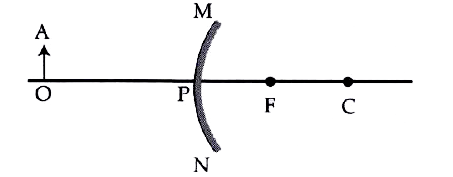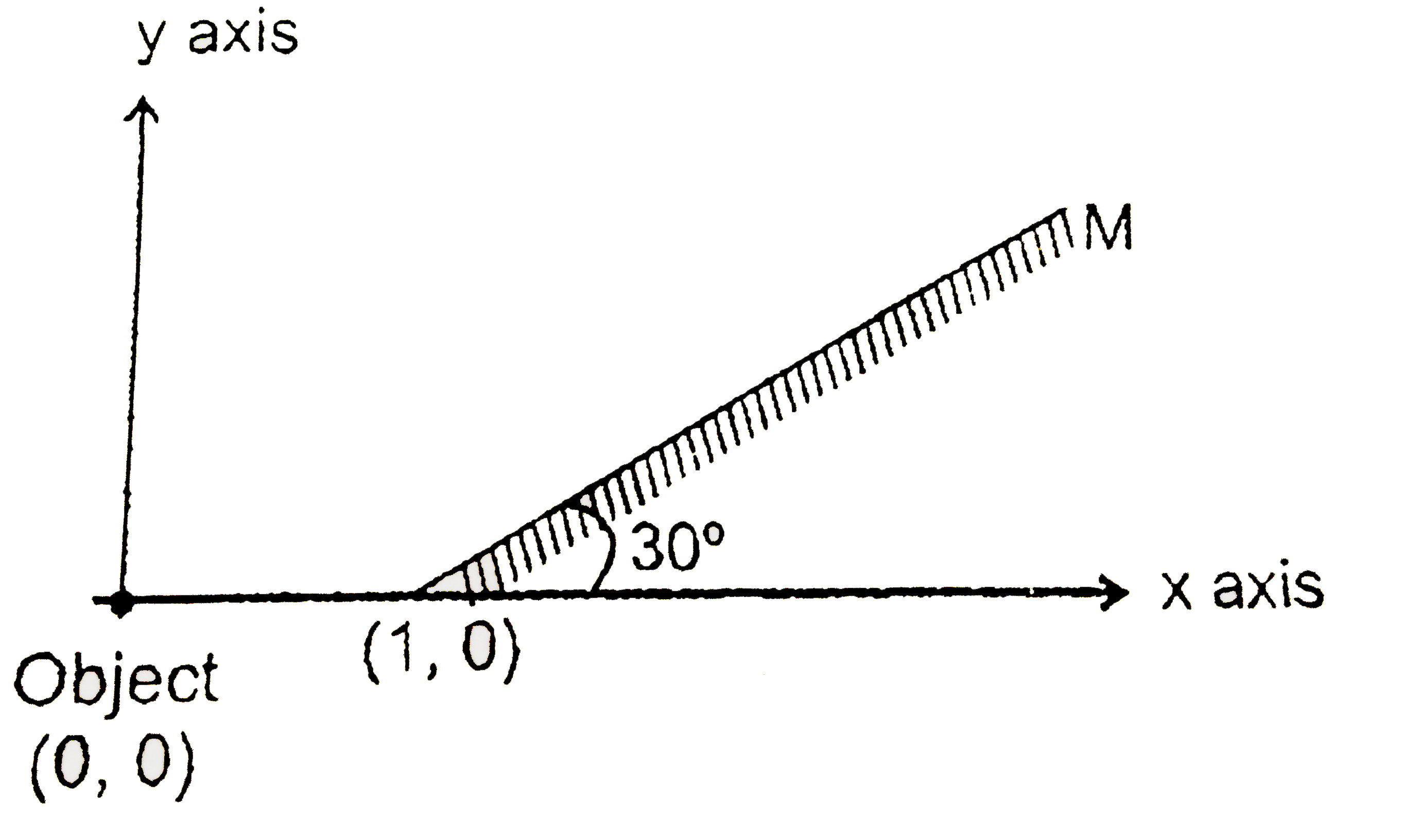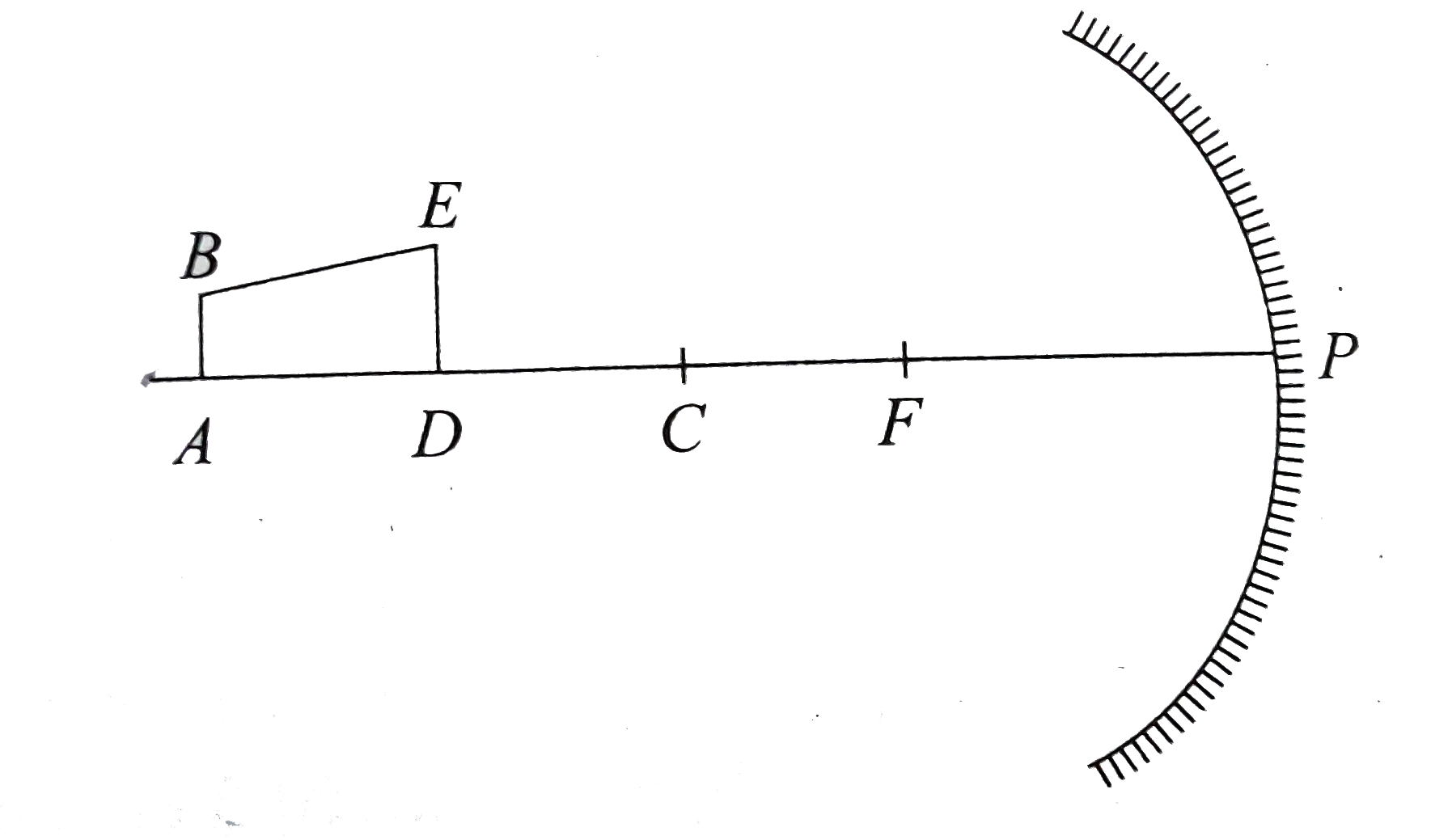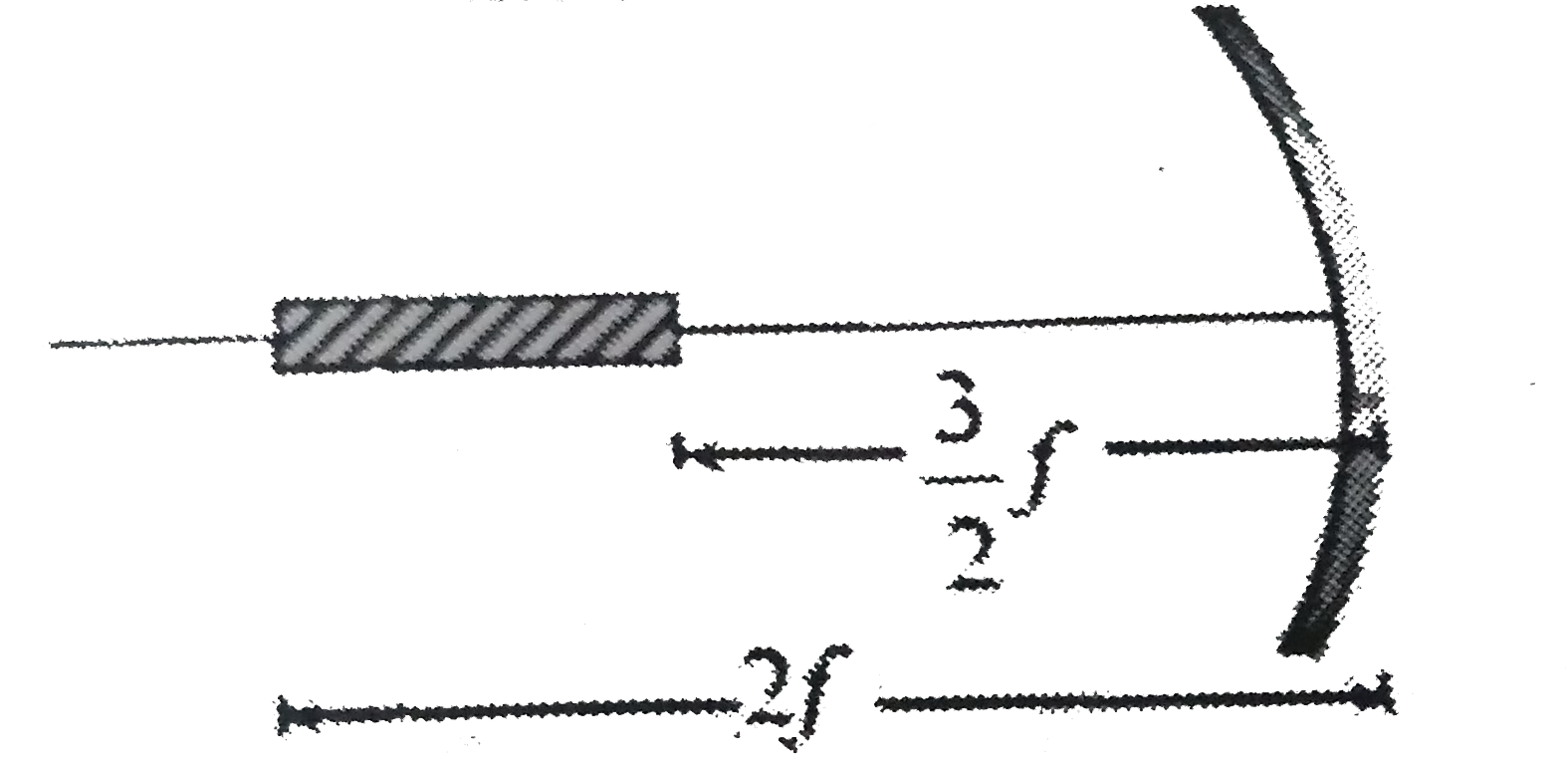A concave mirror is placed on a horizontal table with its axis directed vertically upward. Let O be the pole of the mirror C its center of curvature and F is the focus. A point object is placed at C. It has a real image, also located at C. If the mirror is now filled with water, the image will be
real and will remain at C
real and located at a point between C and ∞
virtual and located at a point between C and O
real and located at a point between C and O
The correct Answer is:d.
To solve the problem, we need to analyze the behavior of light rays when a concave mirror is filled with water. Here’s a step-by-step solution:
Step 1: Understand the Initial Setup
- A concave mirror is placed with its axis directed vertically upward.
- The pole of the mirror is denoted as O, the center of curvature as C, and the focus as F.
- A point object is placed at C, which means it is at the center of curvature.
Hint: Remember that when an object is placed at the center of curvature of a concave mirror, the image formed is real and located at the same point (C).
Step 2: Determine the Image Formation in Air
- When the object is at C, the rays coming from C reflect off the mirror and converge back at C.
- Thus, the image formed is real and located at C.
Hint: Recall the mirror formula and the properties of concave mirrors when the object is at the center of curvature.
Step 3: Analyze the Effect of Filling the Mirror with Water
- When the mirror is filled with water, the refractive index of the medium changes.
- Light rays traveling from the object at C will now pass from air (rarer medium) into water (denser medium).
Hint: Consider how light behaves when it moves from a rarer medium to a denser medium. It bends towards the normal.
Step 4: Trace the Path of Light Rays
- As the light rays travel from C, they will bend towards the normal when entering the water.
- After reflecting off the mirror, the rays will again exit the water and bend away from the normal as they move from water to air.
Hint: Use ray diagrams to visualize how the light rays change direction at the interface of air and water.
Step 5: Determine the New Image Location
- After tracing the rays, we find that they converge at a point between C and O.
- This indicates that the image formed is real and located between the center of curvature (C) and the pole (O).
Hint: Check the characteristics of the image formed by the mirror when the object is at C in a denser medium.
Conclusion
The image formed when the concave mirror is filled with water is real and located between C and O.
Final Answer
The correct option is: Real and located between C and O.
---
- A concave mirror is placed with its axis directed vertically upward.
- The pole of the mirror is denoted as O, the center of curvature as C, and the focus as F.
- A point object is placed at C, which means it is at the center of curvature.
- When the object is at C, the rays coming from C reflect off the mirror and converge back at C.
- Thus, the image formed is real and located at C.
- When the mirror is filled with water, the refractive index of the medium changes.
- Light rays traveling from the object at C will now pass from air (rarer medium) into water (denser medium).
- As the light rays travel from C, they will bend towards the normal when entering the water.
- After reflecting off the mirror, the rays will again exit the water and bend away from the normal as they move from water to air.
- After tracing the rays, we find that they converge at a point between C and O.
- This indicates that the image formed is real and located between the center of curvature (C) and the pole (O).
The image formed when the concave mirror is filled with water is real and located between C and O.
The correct option is: Real and located between C and O.
Topper's Solved these Questions
- GEOMETRICAL OPTICSBook:CENGAGE PHYSICS ENGLISHChapter:GEOMETRICAL OPTICSExercise:Assertion-Reasoninig
Explore 2 Videos
- GEOMETRICAL OPTICSBook:CENGAGE PHYSICS ENGLISHChapter:GEOMETRICAL OPTICSExercise:Linked Comprehension
Explore 51 Videos
- GEOMETRICAL OPTICSBook:CENGAGE PHYSICS ENGLISHChapter:GEOMETRICAL OPTICSExercise:Subjective
Explore 26 Videos
- ELECTRON,PHONTS,PHOTOELECTRIC EFFECT & X-RAYSBook:CENGAGE PHYSICS ENGLISHChapter:ELECTRON,PHONTS,PHOTOELECTRIC EFFECT & X-RAYSExercise:dpp 3.3
Explore 15 Videos
- HEATING EFFECT OF CURRENTBook:CENGAGE PHYSICS ENGLISHChapter:HEATING EFFECT OF CURRENTExercise:Thermal Power in Resistance Connected in Circuit
Explore 27 Videos
Similar Questions
A convex mirror has its radius of curvature 20 cm. Find the position of the image of an object placed at a distance of 12 cm from the mirror.

View SolutionThe diagram , below shows a concex mirror . C is its centre of curvature and F is its focus.
(i)Draw two rays from A and hence locate the position of image of object OA.
(ii) State three characteristics of the image.

View SolutionThe minimum distance between the object and its real image for concave mirror is
View SolutionAn object is placed on principal axis of concave mirror at distance of 1.5 f Image will be at
View SolutionA point object is placed (0,0) and a plane mirror 'M' is placed, inclined 30∘ with the x axis.
Find the position of image.

View SolutionAn object is placed in front of a concave mirror between the pole and the focus of the mirror. What is the nature of the image formed by the mirror ?
View SolutionAn object ABED is placed in front of a concave mirror beyond the center of curvature C as shown in figure., State the shape of the image.

View SolutionA concave mirror produces three times magnified real image of an object placed at 10 cm in front of it. Where is the image located ?
View SolutionA point object at a distance 5R/3 from the pole of a concave mirror. R is the radius of curvature of mirror. Point object oscillates with amplitude of 1mm perpendicular to the principal axis.

The amplitude of image is
View SolutionA linear object is placed along the axis of a mirror as shown in figure. If 'f' is the focal length of the mirror then the length of image is-

View Solution